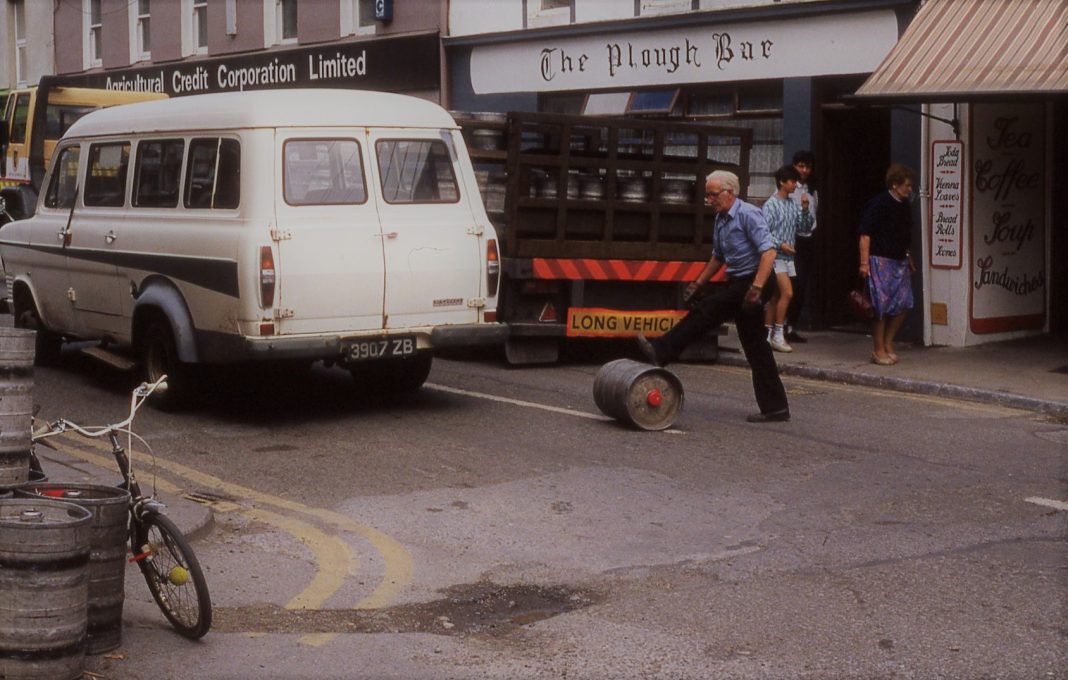Now and in time to be,
Wherever green is worn,
Are changed, changed utterly:
A terrible beauty is born.
William Butler Yeats wrote the poem Easter, 1916 as a personal response to his mixed feelings in the aftermath of the Easter Rising, which set into motion a chain of events culminating in the establishment of an independent Irish Republic.
Obviously there is far more to Irish history than these tumultuous events more than a century ago, and although millions of Americans can trace their lineage to Ireland, neither they nor millions of others who celebrate Ireland each year on St. Patrick’s Day can be relied upon to have studied the topic altogether deeply.
Not should they; after all, they’re Americans now, and in some cases they’ve been Americans since coming here during the decades prior to the Civil War, when the Irish diaspora was launched in earnest amid the tragedy of the Great Famine.
The Irish themselves display remarkable equanimity as it pertains to the typical excesses of our planet’s wacky St. Patrick’s Day observances, not all of which correspond very closely to the realities of Irishness. As an example, there is a consideration of consonants.
Paddy is derived from the Irish, Pádraig: the source of those mysterious, emerald double-Ds. Patty is the diminutive of Patricia, or a burger, and just not something you call a fella. There isn’t a sinner in Ireland that would refer to a Patrick as “Patty”. It’s as simple as that.
In short, it’s St. Paddy’s Day, if one is prone to abbreviation.
Concurrently, each and every day of the year save one, the term “green beer” is used by brewers to describe a product not yet fit for consumption by humans. Give a young batch of beer ample time to mature, and the effects will be considerably happier.
Far better for St. Patrick’s Day revelers to drink a jar of the black gold, otherwise known as Guinness Stout (or another brand of the stout genre). It’s a light-bodied dark ale with far fewer calories than might be imagined, but if a mix is desired, request a half-and-half (layered with Smithwick’s Red or Harp Lager) rather than a “black & tan,” as the latter term describes infamous paramilitary vigilantes during Ireland’s civil war.
The same respect for history applies to the unfortunately labeled “Irish Car Bomb,” which not unexpectedly originated in America. Boston-based bartender Haley Hamilton explains.
Look, I get it: It’s just a drink. But here’s the thing: Unless you crawled out from under a rock yesterday or have zero working knowledge of either 20th-century European history or the English language, you know it’s at the very least a disservice to the Irish culture you claim to be celebrating on St. Patrick’s Day, if not downright offensive.You wouldn’t order a suicide bomb on the Fourth of July, or a pulse shot during Pride, right? So it is with the Irish car bomb: It’s an insensitive and traumatic reminder of a dark and painful period of Ireland’s national history.
Preferred St. Patrick’s Day cuisine, specifically corned beef and cabbage, also cannot elude scrutiny.
Inescapably, 2020 will be remembered as the year of COVID-19, the coronavirus. March Madness already has been felled by the prerequisites of social distancing and flattening the curve, and while St. Patrick’s Day will be honored on Tuesday as before, it’s likely to be with a somber sense that our personal and communal worlds may well become increasingly disrupted as we cope with a phenomenon that hitherto has been reserved for cinematic epics, not the simple task of finding toilet paper at the store.
But Ireland and the Irish are long accustomed to making the best of inopportune situations. Now more than ever, the traditional Irish toast is relevant: Sláinte (SLAHN-chə), taken as “good health” in English, and derived from the Gaelic word slán, meaning “healthy” or “safe.”























